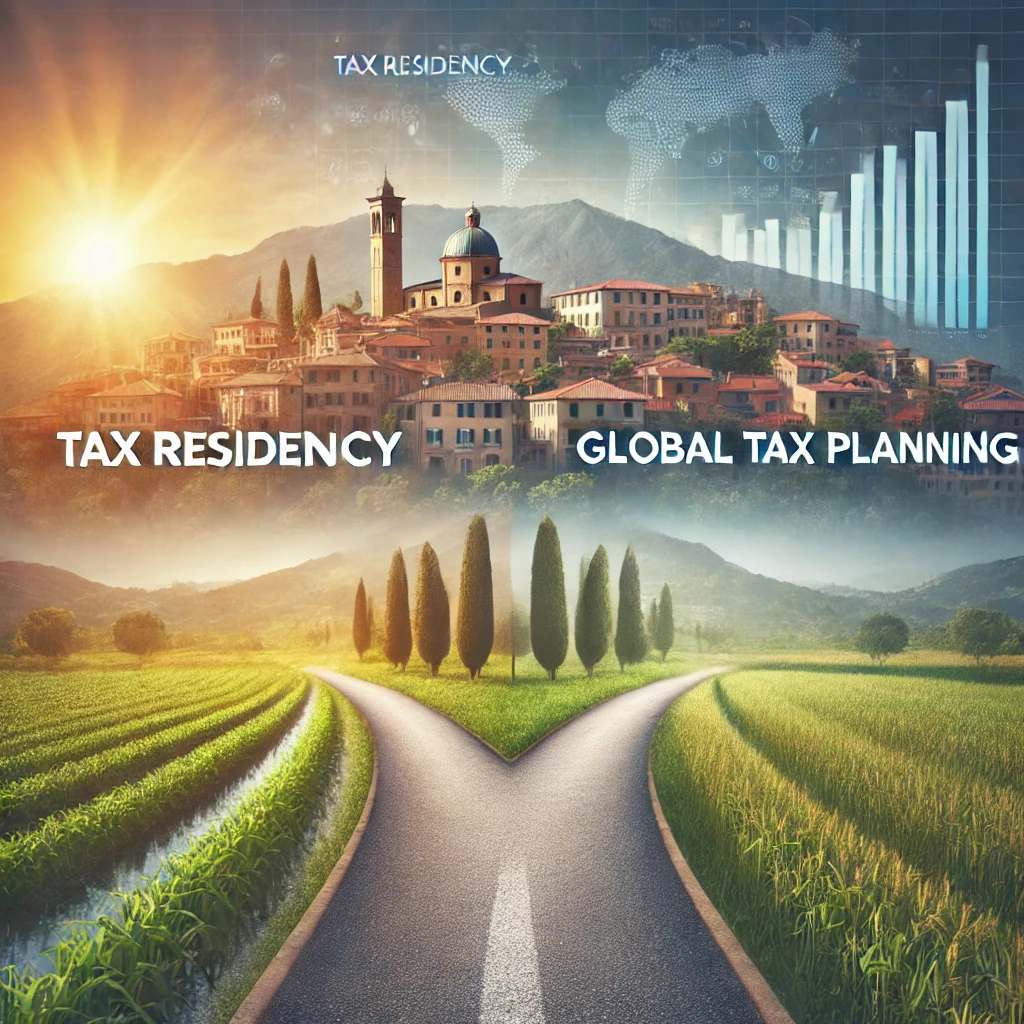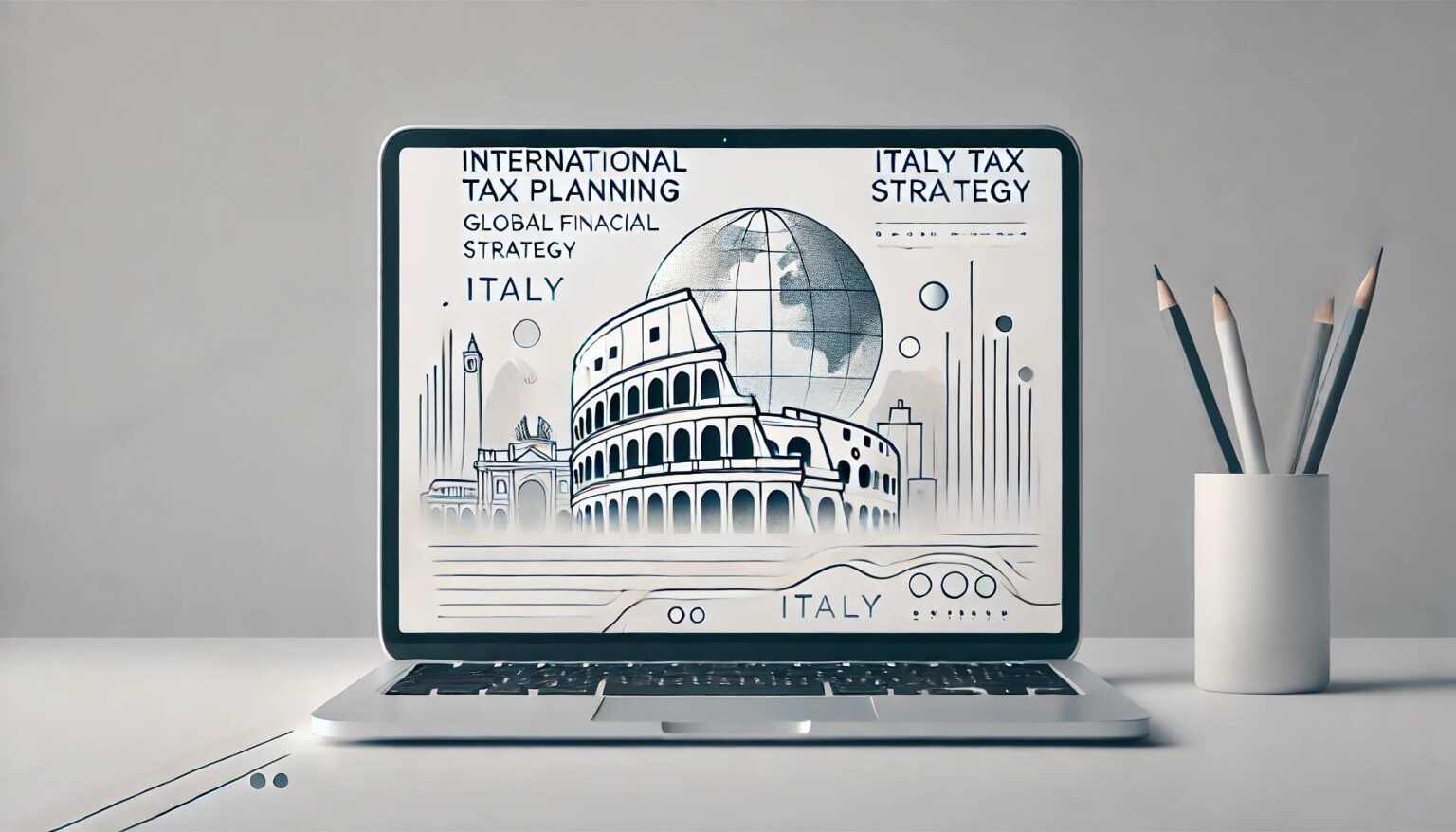Italy, a country celebrated for its pizza, pasta, and rich cultural heritage, has also become a focal point for those seeking strategic tax opportunities. But hold on—before you pack your bags and dream of living la dolce vita, there’s a lot more to consider than just the beautiful landscapes and mouthwatering cuisine.
You see, the real question isn’t just about whether you should move to Italy—it’s about whether you’re stepping into a tax paradise or walking right into a golden trap. Sure, the allure of Italy tax residency is hard to resist, especially when you hear about the potential to pay significantly less in taxes. But is it really that simple? Are these tax incentives as straightforward as they seem, or are there hidden complexities that could turn your dream of tax optimization into a financial headache?
In this blog, we’re going to peel back the layers of Italy’s tax regimes, including the “Regime degli Impatriati,” the “Regime Forfettario,” and the flat tax for high-net-worth individuals. We’ll explore who these regimes benefit the most and why, despite the attractive offers, Italy’s tax system might not be the best fit for everyone. So, whether you’re an expat considering a move or a digital nomad looking for the next tax-friendly haven, keep reading. This isn’t just about understanding Italy’s tax residency landscape—it’s about making a decision that safeguards your financial future.
Indice del artículo
The Importance of Smart Tax Planning
Let’s face it—paying taxes is an unavoidable part of life, but that doesn’t mean you have to accept every tax bill that comes your way without a second thought. Smart tax planning is all about minimizing your tax burden legally, allowing you to keep more of your hard-earned money. In a world where every cent counts, why wouldn’t you take advantage of the opportunities available?
Imagine taxes as a subscription to a service. Would you keep paying a premium for a service when you know there’s a better, more affordable option out there? Of course not. This is where Italy tax residency enters the conversation. With the right strategy, you can reduce your tax liabilities significantly, maximizing your wealth while complying with the law.
But it’s not just about finding the lowest tax rate—it’s about understanding the concept of tax residency on a global scale. Every country has its own rules about what makes you a tax resident, and Italy is no exception. By strategically choosing where you are a tax resident, you can optimize not just your taxes, but your entire financial life.
For those who are willing to navigate the complexities, Italy offers intriguing options like the Regime degli Impatriati and the Forfettario Regime, both of which provide substantial tax incentives. But here’s the catch: these benefits aren’t available to everyone, and the rules can be strict. That’s why a smart approach to tax planning isn’t just a good idea—it’s essential.
Whether you’re an expat, a freelancer, or a high-net-worth individual, understanding tax residency and planning your finances accordingly is the key to building and preserving your wealth. Don’t leave your financial future to chance; plan smart, and you could be living in Italy, enjoying the culture and beauty, all while keeping your tax bill in check.

Overview of Italy’s Special Tax Regimes
The three main tax regimes that stand out are the Regime degli Impatriati, the Regime Forfettario, and the flat tax for high-net-worth individuals. Each of these regimes offers unique benefits, depending on your situation and financial goals. Whether you’re a freelancer looking to lower your tax bill or a wealthy individual seeking to safeguard your assets, Italy has crafted these regimes to appeal to a broad audience. But as with any tax incentive, the devil is in the details, and understanding how these regimes work is crucial to making the most of them.
For those considering Italy as a potential base, it’s essential to weigh the pros and cons of these tax regimes. On the surface, they might appear to be incredibly attractive, but a closer examination reveals that they each come with specific conditions and limitations. These special regimes are not just about paying less tax; they’re about navigating a complex system that can either work for you or against you, depending on how well you understand and utilize the options available.
Understanding Italy’s tax regimes isn’t just about knowing the tax rates or the benefits—they require a deep dive into the eligibility criteria, the longevity of the benefits, and the potential risks if your circumstances change. Each regime was designed with a specific target in mind, so identifying which category you fall into is the first step in making an informed decision.
The “Regime degli Impatriati”
The Regime degli Impatriati was introduced in 2017 with a clear goal: to attract Italian expatriates back home and entice foreign talent to bring their skills and expertise to Italy. This regime was a game-changer, offering substantial tax breaks that made relocating to Italy more attractive for professionals from all over the world.
Originally, the regime allowed for a tax exemption of up to 70%, or even 90% in certain regions, on income earned in Italy. This was a huge draw for those looking to maximize their earnings while enjoying the rich culture and lifestyle that Italy offers. However, as of 2024, the rules have changed, and it’s crucial to understand these changes before making any decisions.
To qualify under the new rules, you must not have been a tax resident in Italy for the previous 3 to 7 years, depending on your specific employment situation. This regime lasts for five years, during which you can enjoy a 50% tax exemption, with a cap of EUR 600,000 on your income. If you move to Italy with a minor child, the exemption increases to 60%, providing an additional incentive for families considering relocation.
But here’s the catch: the Regime degli Impatriati is not a short-term solution. If you leave Italy before completing the five-year period, you’ll be required to repay the tax incentives, plus interest. This rule ensures that only those serious about making Italy their long-term home can benefit from the regime. Additionally, the regime is designed for individuals with high qualifications or specialized skills that are in demand in Italy, further narrowing the eligibility.
While this regime can be incredibly beneficial, it’s not without risks. The commitment to stay in Italy for a minimum of five years is a significant one, and the financial implications of leaving early can be severe. That’s why it’s essential to thoroughly evaluate whether this regime aligns with your long-term goals and to consider visiting Italy first to see if it’s the right fit for you.

The “Regime Forfettario”
For freelancers, small business owners, and entrepreneurs, Italy offers the Regime Forfettario—a simplified tax regime designed to lighten the tax burden for those who qualify. This regime is particularly appealing if you’re looking to establish a small business or work independently while enjoying the benefits of living in Italy. However, as with any tax incentive, it’s crucial to understand the specifics to make sure it’s the right fit for you.
Under the Regime Forfettario, if your annual income doesn’t exceed EUR 85,000, you can benefit from a flat tax rate of 5% on your income for the first five years. After this initial period, the tax rate increases to 15%. This offers a significant reduction compared to the standard tax rates, making it an attractive option for those who meet the criteria.
But, as appealing as this may sound, the regime comes with several conditions. To qualify, you must not have carried out a similar business activity in the three years prior, and your business cannot be a continuation of a previous one. Additionally, if your income surpasses EUR 85,000, or if you pay more than EUR 20,000 in salaries, you’ll lose eligibility for the regime. There are also restrictions if you work primarily for a former employer or control a business in the same sector.
One of the biggest considerations with the Regime Forfettario is the cost of social security contributions in Italy. These contributions are notoriously high, with an average rate of around 26%. When combined with the flat tax, your total tax burden could reach nearly 40% of your income. This is a significant factor to consider, especially when comparing the regime to other tax options available in Italy or even abroad.
While the Regime Forfettario can offer substantial savings on income tax, it’s not a one-size-fits-all solution. The social security contributions, along with the stringent eligibility requirements, can make it less attractive for some. However, for those who qualify and plan to keep their income within the thresholds, it provides a straightforward and potentially beneficial tax structure.
The Flat Tax for High Net Worth Individuals
For high-net-worth individuals, Italy’s flat tax regime offers a unique opportunity to simplify tax obligations while enjoying the benefits of living in one of Europe’s most culturally rich countries. This regime is particularly appealing to those with substantial global income, as it allows you to pay a fixed annual tax regardless of how much you earn worldwide.
The flat tax was originally set at EUR 100,000 per year, making it an attractive option for wealthy individuals looking to manage their tax liabilities predictably. However, as of August 2024, the Italian government has doubled this amount to EUR 200,000 per year for new residents. This increase reflects Italy’s growing interest in attracting affluent individuals while also raising the bar for those considering this option.
Under this regime, the fixed tax amount covers all foreign-sourced income, meaning you won’t be taxed again in Italy on earnings made outside the country. This can be particularly advantageous for those with diverse investments or businesses spread across multiple countries. The regime also extends to family members, allowing them to benefit from a reduced fixed tax rate of EUR 25,000 per person, making it a compelling option for wealthy families considering relocation.
However, the flat tax regime is not without its considerations. While the simplicity and predictability of the fixed tax are appealing, the initial amount of EUR 200,000 per year is still a significant sum. For some, the benefits of this regime may outweigh the costs, especially when compared to the potentially higher tax burdens in other high-tax countries. But for others, particularly those whose income may not justify the fixed amount, it’s essential to weigh the pros and cons carefully.
Moreover, this regime is most beneficial for individuals who plan to remain in Italy for the long term. The 15-year duration provides ample time to maximize the benefits, but the financial commitment is substantial. Leaving Italy before the end of this period could lead to a reassessment of your tax situation, so it’s crucial to be certain of your long-term plans before committing.

Comparing Italy to Other Low-Tax Destinations
When considering a move to optimize your tax situation, it’s essential to compare Italy’s offerings with those of other low-tax destinations. While Italy provides some attractive regimes like the Regime degli Impatriati and the flat tax for high-net-worth individuals, how does it stack up against other popular tax havens like Andorra, the UAE, and Panama?
Italy vs. Andorra
Andorra, a small principality nestled in the Pyrenees between France and Spain, is known for its low tax rates and high quality of life. Unlike Italy’s complex tax regimes, Andorra offers a straightforward flat income tax rate of 10% for residents, making it an attractive option for those looking for simplicity. Additionally, Andorra has no wealth tax, inheritance tax, or capital gains tax, which can be a significant advantage for high-net-worth individuals.
However, Italy’s tax regimes, particularly the Regime Forfettario for freelancers and small business owners, can offer competitive advantages if your income is below EUR 85,000, thanks to the lower tax rates during the first five years. Italy also offers a richer cultural experience and access to the broader European market, which may be important for entrepreneurs and business owners.
Italy vs. UAE
The United Arab Emirates is a heavyweight in the world of tax optimization, offering a zero-income tax environment for both individuals and corporations. The UAE’s free zones provide additional benefits, such as 100% foreign ownership and repatriation of profits, making it a top destination for global entrepreneurs and businesses.
In comparison, Italy’s flat tax regime for high-net-worth individuals is more predictable but comes with a significant annual tax burden of EUR 200,000. While Italy can’t compete with the UAE’s zero-tax offering, it provides a different value proposition: access to the European Union, a robust legal framework, and the possibility to enjoy a lifestyle that balances work with rich cultural experiences.
Italy vs. Panama
Panama is another strong contender for those looking to reduce their tax burden. With its territorial tax system, Panama only taxes income generated within the country, meaning foreign-sourced income is tax-free. This system, combined with affordable living costs and a favorable climate, makes Panama particularly appealing for retirees and digital nomads.
Italy’s Regime degli Impatriati offers similar benefits by exempting a significant portion of income from taxation. However, the regime’s restrictions, such as the requirement to stay in Italy for a minimum of five years to avoid repaying tax incentives, make it less flexible than Panama’s offerings. That said, Italy might appeal more to those looking for a European base with access to top-tier healthcare, education, and infrastructure.
Why Italy’s Tax Regimes May (or May Not) Be Competitive
Italy’s tax regimes are designed to attract specific groups—highly qualified professionals, entrepreneurs, and wealthy individuals. While they offer significant benefits, the complexity and restrictions can be a deterrent compared to more straightforward jurisdictions like Andorra, the UAE, or Panama.
Conclusion
After exploring Italy’s various tax regimes and weighing them against other low-tax destinations, the question remains: is Italy the right choice for you? The answer isn’t a simple yes or no; it depends on your unique circumstances, financial goals, and long-term plans.
Italy offers a compelling mix of cultural richness, strategic location within the European Union, and attractive tax incentives like the Regime degli Impatriati, Regime Forfettario, and the flat tax for high-net-worth individuals. These regimes can provide substantial tax savings, but they come with specific requirements and potential risks, such as the need for long-term residency and the high cost of social security contributions.
If you value a European lifestyle with access to world-class healthcare, education, and infrastructure, and if you’re prepared to commit to Italy for the long term, these tax regimes could align well with your objectives. On the other hand, if you’re seeking a more straightforward, low-tax environment without the complexities of Italian bureaucracy, other destinations like Andorra, the UAE, or Panama might be more suitable.
Ultimately, the decision to move to Italy should balance lifestyle and tax savings. Italy’s tax regimes can offer significant benefits, but they require careful planning and a thorough understanding of the commitments involved. Before making any moves, consult with a tax professional who can guide you through the intricacies of Italian tax law and help you make an informed decision that protects your wealth and supports your long-term goals.
Italy might be the perfect place for you to plant your roots, enjoy la dolce vita, and optimize your tax situation—but only if it aligns with your overall strategy. Take the time to evaluate all aspects carefully, and you’ll be well on your way to making the right choice for your future.



